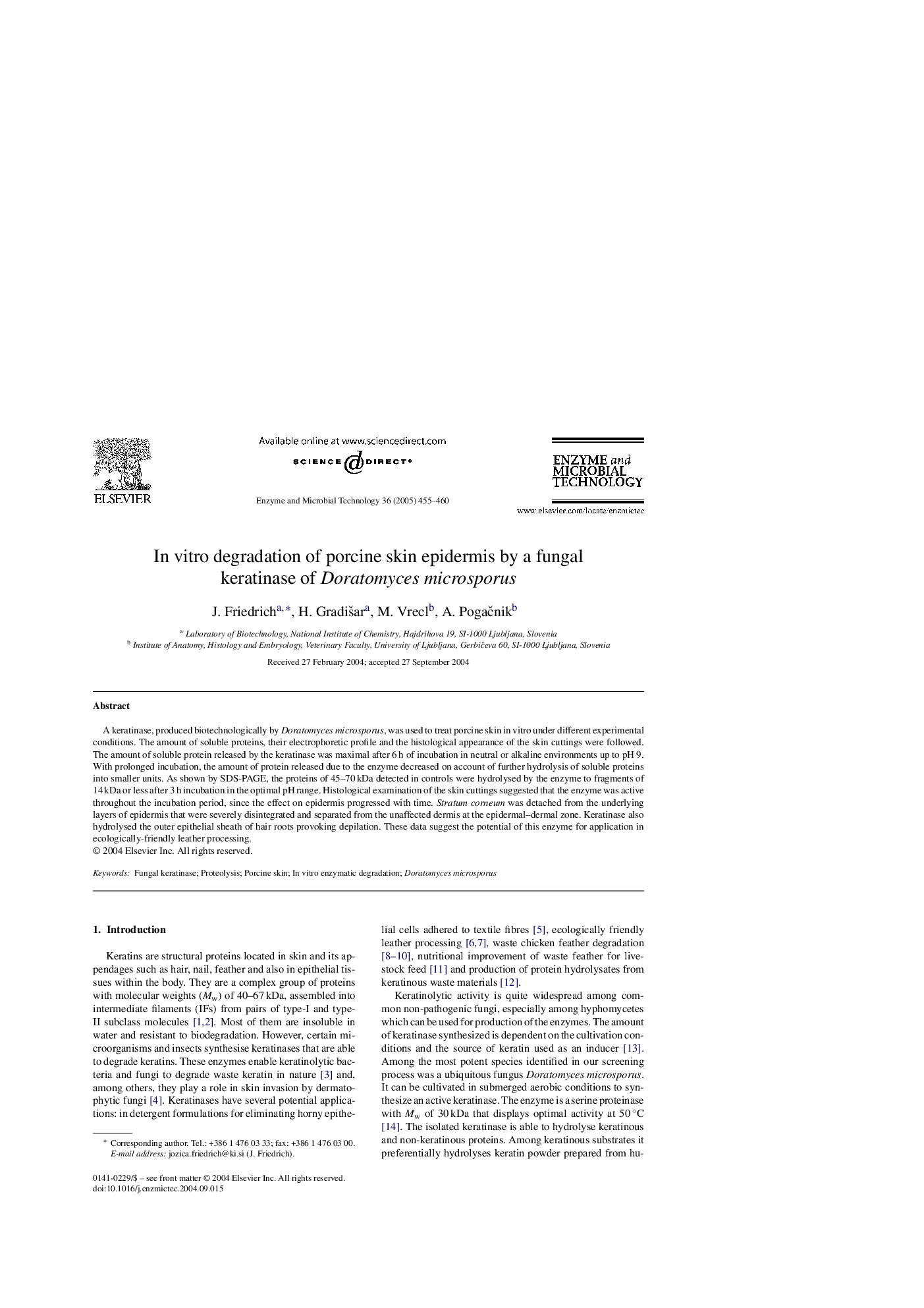| Article ID | Journal | Published Year | Pages | File Type |
|---|---|---|---|---|
| 10233226 | Enzyme and Microbial Technology | 2005 | 6 Pages |
Abstract
A keratinase, produced biotechnologically by Doratomyces microsporus, was used to treat porcine skin in vitro under different experimental conditions. The amount of soluble proteins, their electrophoretic profile and the histological appearance of the skin cuttings were followed. The amount of soluble protein released by the keratinase was maximal after 6Â h of incubation in neutral or alkaline environments up to pH 9. With prolonged incubation, the amount of protein released due to the enzyme decreased on account of further hydrolysis of soluble proteins into smaller units. As shown by SDS-PAGE, the proteins of 45-70Â kDa detected in controls were hydrolysed by the enzyme to fragments of 14Â kDa or less after 3Â h incubation in the optimal pH range. Histological examination of the skin cuttings suggested that the enzyme was active throughout the incubation period, since the effect on epidermis progressed with time. Stratum corneum was detached from the underlying layers of epidermis that were severely disintegrated and separated from the unaffected dermis at the epidermal-dermal zone. Keratinase also hydrolysed the outer epithelial sheath of hair roots provoking depilation. These data suggest the potential of this enzyme for application in ecologically-friendly leather processing.
Keywords
Related Topics
Physical Sciences and Engineering
Chemical Engineering
Bioengineering
Authors
J. Friedrich, H. GradiÅ¡ar, M. Vrecl, A. PogaÄnik,
